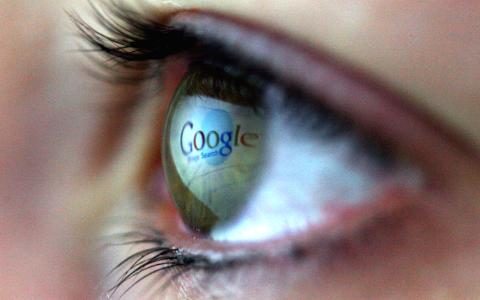
Considering technology has only been around for the last 50 years, many young people wouldn’t be able to imagine a world offline. This begs the questions – is it human nature to be obsessed with our screens, or have they been designed that way?
What is screen addiction?
Addiction is an illness which describes a compulsive need to take or use something to feel a ‘high’. Although screen addiction in itself is not yet a diagnosis, persuasive techniques used in apps could lead to gambling or gaming addiction. These are severe illnesses which could require rehabilitation, if left untreated.
Addiction is dangerous, as the person is unable to stop what using what they are addicted to, even if it is causing them harm. In the case of gambling, this could be extreme debt, loss of job or family, or even resorting to unethical behaviour in order to fund their gambling.
The impact of marketing on screen addiction
Tech developers apply an understanding of human motivation and psychology, when creating and updating their products. Over time, systems can learn about our habits, make suggestions and even predict our future behaviour. This can be very positive and helpful – speeding up transactions, simplifying purchases, entertaining us, helping us to learn and connecting us across continents.
But where is the line between improving user experiences online and encouraging addiction?
According to ‘Online Harms,’ a White Paper authored by the Department for Digital, Culture, Media and Sport and the Home Office online, products have been developed “to encourage continuous use” through ‘persuasive design’.
The marketing techniques used to hook users
Persuasive design centres around recognition and reward. Online products and systems that validate our participation, notice our efforts, prioritise the things that are important to us and reward our loyalty are much more satisfying – and potentially addictive – than impersonal, one-size-fits-all, technology.
Here are 10 common features of this tactic:
Quick sign-ups and first-name terms

From the start, your name appears on the screen. System notifications and messages can be addressed to you personally. You can give more information about your interests. From there, you can customise and post as much as you want.
Notifications within the platform
Typically, notifications are numbers – bold or brightly coloured, sometimes flashing or in brackets. Notifications alert us to messages in our inbox, interactions with our social media posts, winnings in our account or relevant content, which appeals to our curiosity.
Most platforms give users the choice to define the type and amount of notifications they receive. However, not everyone knows how to do this. Altering your notification settings also takes time, which not everyone can spare.
Notifications to email, desktop, mobile or text
These are notification alerts sent from the app or platform to your email, computer or mobile phone. They’re customisable but often the default settings are switched on.
Notification messages encourage action – such as ‘highlights for you’, ‘here’s what you missed’ and ‘you appeared in 12 searches this week’. They set up the desire to discover and the potential for reward.
Likes and comments

In 2016, Facebook rolled out six augmented reactions – like, love, haha, wow, sad and angry. This update amplified the potential for users to give appreciation and feel appreciated, as well as to express dissatisfaction or distaste. Controversy can often be more compelling than validation, often increasing screen time as a result.
Recognition of your milestones and achievements
A great marketing tactic used to draw users to the screen is massaging the ego. Notifications like ‘your stats are booming’, ‘you’ve received 50 follows’ or ‘happy anniversary’ – often with trophy icons and colourful buttons – are all intended to make you feel good and engage more.
The infinite scroll
Think of news feeds on Twitter, Facebook or Instagram. There is always something more to see, perhaps something really interesting, if you just scroll further. There is no end to the information, so you could be missing out if you log off.
With no stopping point to information online, users have to regulate their own use. Some find this easier than others.
Refresh buttons and pull-to-refresh
This feature of social media news feeds, live media updates and online sales events contribute to cycles of anticipation, discovery and reward.
Think of highly anticipated ticket sales – such as the annual scramble for Glastonbury Festival tickets. Or live updates about a compelling football match that you’re following online. The repetitive action of refreshing the page to seek exciting information is a feature of persuasive design that can extend our screen time. It’s the randomness of the reward that compels people to refresh multiple times – a feature similar to slot machines.
Semiotics (how we interpret signs and signals)
Semiotics is about the use of colours, imagery, typography, layouts and branding, which is designed to appeal to specific audiences, as well as predict how people will respond.
Just like road signs and warning symbols, red is used to catch people’s eye; many developers have used red for notification icons and other calls to action, to draw our attention and encourage action.
Opportunities to compete, win, earn or get free stuff
This is central to gambling and gaming platforms. Features include incentivising sign-ups to gambling accounts with matched betting offers, encouraging competitive battles between online gamers, in-app purchases to enhance gameplay, rewarding users with advertising kickbacks or prize revenue and offering free merchandise to top account holders.
It’s also a common tactic to encourage people to sign up to email databases and social media groups. Known as lead magnets, you’ll get a free e-book or prize draw entry, in exchange for your email address or for liking and sharing a post.
Algorithms, machine learning and artificial intelligence

How much influence does marketing have on addiction?
Although the rise of technology can be great for entertainment and quick access to information, every time we use our phone or computer, we are susceptible to ‘persuasive’ marketing techniques which could push someone with a predisposition of gaming addiction or gambling addiction into temptation.
These techniques are also a risk to those who have been through rehabilitation and are now in recovery. Pop ups, gambling adverts and brightly coloured notifications have the potential to lure a person into relapse.
What to do if you are addicted to the screen
If your health and wellbeing are affected by excessive screen time, this does not mean you have an addiction. However, if you recognise any of the symptoms included in this page, or you are worried that yourself or a loved one is dependent on the screen, please call UKAT for an assessment and advice.

